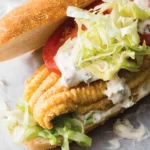From the 1500s to the 1700s, European countries played a game of hot potato in the New World. Territory changed hands quickly, but for a time, France occupied much of Canada and Middle America, England ruled much of the East Coast, and Spain claimed Florida and much of the Southwest, from Louisiana to California and Mexico.
In the early 1600s, country folk from western France began making life for themselves in Acadia–which’s in today’s Novia Scotia, Canada. As the French settlers adapted to the New World, they became known as the Acadians. In 1713, the area swapped from French to British hands when the Treaty of Utrecht was signed. The treaty meant the Acadians were now subjects of the British monarchy and were expected to worship at the Church of England. The faithful Acadians refused to pledge fealty to either the British crown or Anglican religion and rebelled. In 1755, the British governor decided to solve the problem of unruly Acadians by forcibly dispersing them in Le Grand Derangement. The Acadian refugees were scattered across the British territories and colonies, and many lost their lives.
Exiled Acadians wandered the New World looking for a home. Preferring to follow a Catholic King, many traveled to the Spanish territory of Louisiana, just west of French New Orleans and 2,000 miles from their Canadian home. Spain allowed refugees to settle in their territory, so more Acadians flocked there in hopes of reuniting with their families and communities in the Louisiana countryside. These Acadians adapted to their new homes and became known as Cajuns.
The most famous Acadian refugee is Evangeline, the heroine of Henry Wadsworth Longfellow’s poem of the same name. Evangeline was separated from her love, Gabriel, in the expulsion and searched her entire life for him across the New World, until they finally reunited as he died in her arms. Of the 22 parishes in Louisiana’s Cajun Country, one is named Evangeline, and Ville Platte is the parish seat.
In the 1700s, Spain’s El Camino Real de Los Texas linked the territory with Texas and Mexico City. Because the Acadians were unwanted Exiles themselves, they met strangers with open arms and warm hospitality. Their frequently traveled trail fostered relationships among Native Americans and Irish, Spanish, and French immigrants, creating a rich gumbo of cultures and distinctive dialects.
In this part of the country, English names are far less common like Leblanc, Landry, Hebert (pronounced A-bair), Boudreaux, and Fontenot. Locals mix french right in with their English, and in many schools, French-language immersion begins in kindergarten.
Cajuns are known for zydeco music, played with the accordion, washboard, guitar, and violin, and swamp pop, which combines R&B, country/western, and traditional French Louisiana music. In the 1950s and ’60s, legendary producer Floyd Soileau recorded several swamp pop hits at his Ville Platte studio, which the state later proclaimed the Swamp Pop Capital of the World.
But Cajuns are most famous for their food, which should not be confused with Creole cuisine. While the two have their similarities, they possess defining differences. Cajuns hail from French Canada and live in Louisiana Rural areas, while creoles live in New Orleans and are a mix of Spanish, French, Caribbean, and African American ancestry. Thus, Creole food is considered city food, while Cajun food is more simple, country-style food.
Typical Cajun food includes chicken and sausage gumbo, deep-fried pork cracklins, crawfish etouffee, jambalaya, and boudin (sausage stuffed with rice, green onions, and seasonings). With every bite, this delectable culture is relished and preserved.




African American ancestry is definitely in the Creole ancestry and African American ancestry is also deeply entwined in the Cajun ancestry. African slaves worked the fields of Acadiana and ran from the plantations and lived in the swamps of Acadiana.
This was a very thoughtful of you; informative and full of genuine history. I am from Maine and there were some Acadian communities here, too. They had to move along with the Canadians.
A great piece of history. We enjoyed reading and learning
Hi I’m from Australia, three years ago I drove across Louisiana and Alabama for a few weeks, everywhere I went the people were very friendly and made my stay memorable, I stopped at as many places as possible and tried as much variety of food as I could, thank you for the history of your beautiful state, I hope to return again soon and stay for a few months this time
What a great company! What great spices and food! Love it!